Stranded sailors rescued after their ingenious HELP sign seen from air
After spending eight days shipwrecked on a Pacific desert island, stranded sailors have been rescued thanks to crafting a giant HELP sign made out of palm leaves that was visible from the air
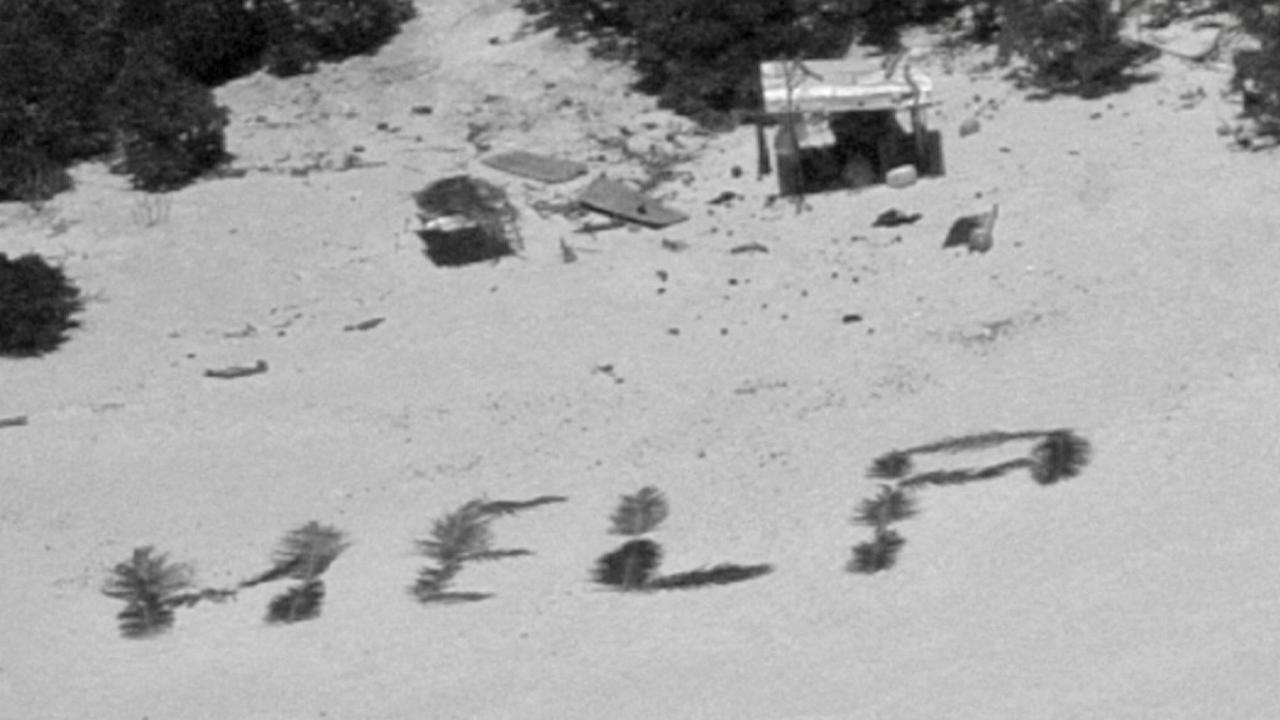
READING LEVEL: GREEN
Three stranded* men have been rescued from a tiny Pacific island after making a giant “HELP” sign with palm leaves.
The men, all experienced mariners* in their 40s, had been stuck on Pikelot Atoll – an uninhabited* island which is part of the Federated States of Micronesia* and 670 km southeast of Guam – before they were saved eight days later.
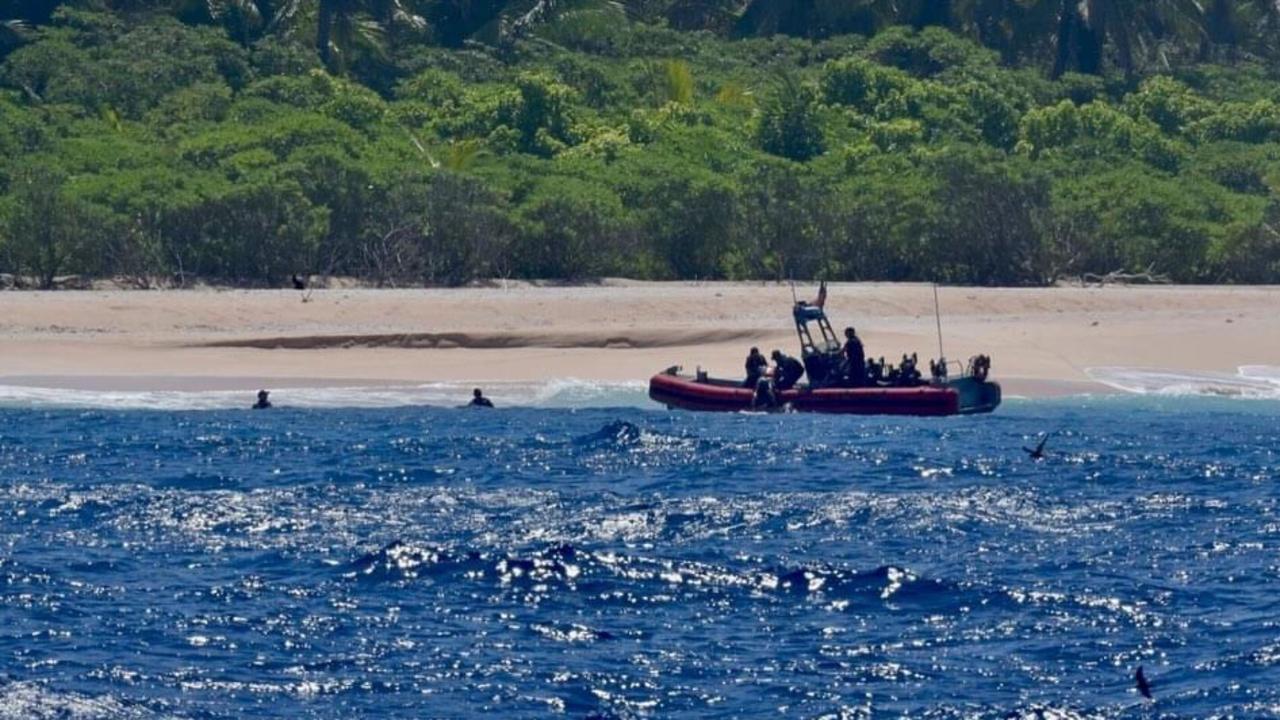
The trio left for a sailing trip on Easter Sunday on a 20-foot open skiff* with an outboard motor, setting out from their home on Polowat Atoll and headed for Pikelot Atoll, about 190 km away.
However, six days later, their niece reported her uncles had not returned home, prompting a search and rescue mission by the US Coast Guard* and navy.
Rescuers were initially tasked with searching an area that spanned more than 78,000sq nautical miles*.
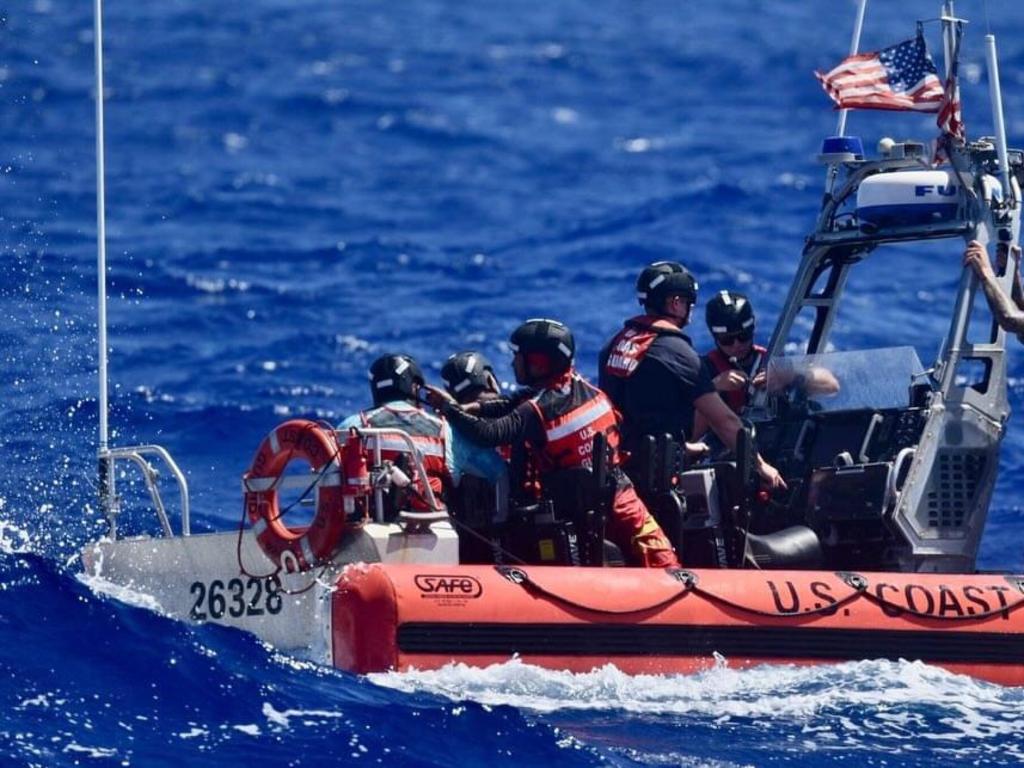
A breakthrough came when the US navy P-8 Poseidon* aircraft crew spotted the giant “HELP” sign from the air one week after the men went missing.
US Coast Guard Lieutenant Chelsea Garcia said the message was “a crucial factor in their discovery”.
“This act of ingenuity* was pivotal* in guiding rescue efforts directly to their location,” she said.
The aircraft flew over the area the next day, Monday 8 April, and dropped a radio to establish communication with the men, who confirmed they were in good health and had access to food and water.
Their boat, however, was damaged, with the on-board engine completely broken.
The men were rescued the following day, Tuesday 9 April, and taken home.
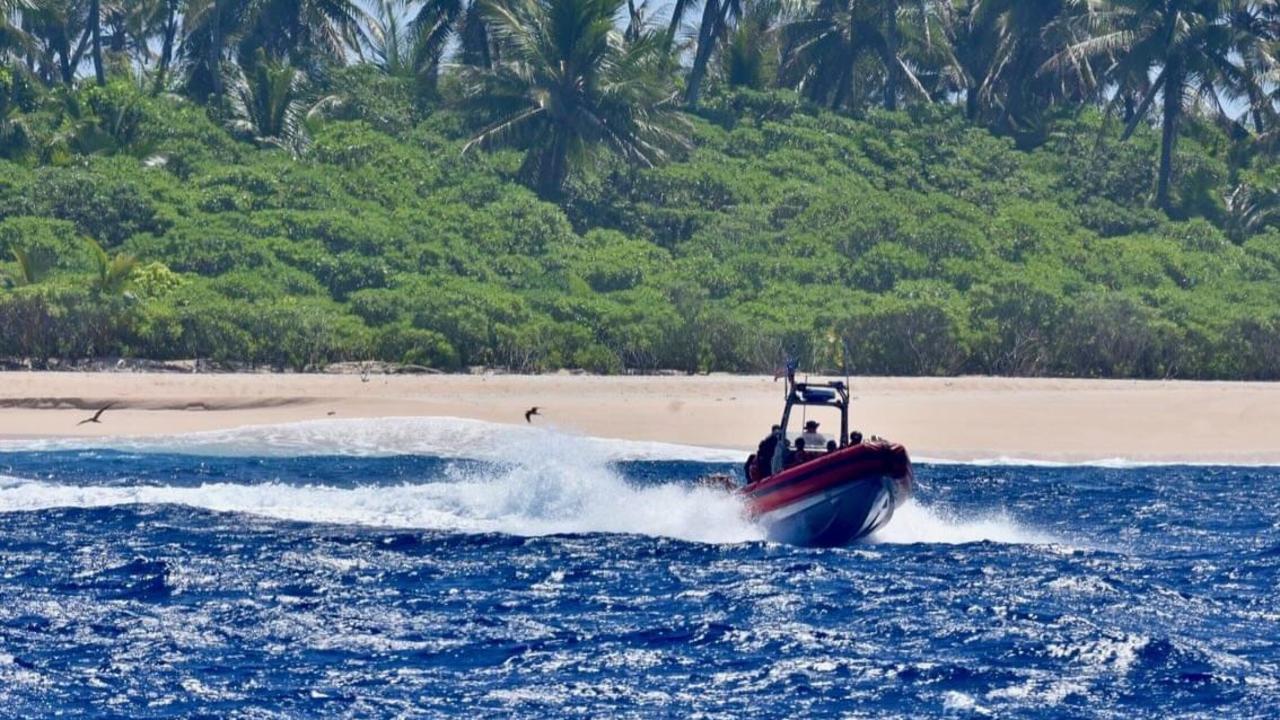
“Every life saved, and every mariner returned home, is a testament* to the enduring* partnership and mutual respect that characterises our relationship,” said search and rescue mission co-ordinator Lieutenant Commander Christine Igisomar.
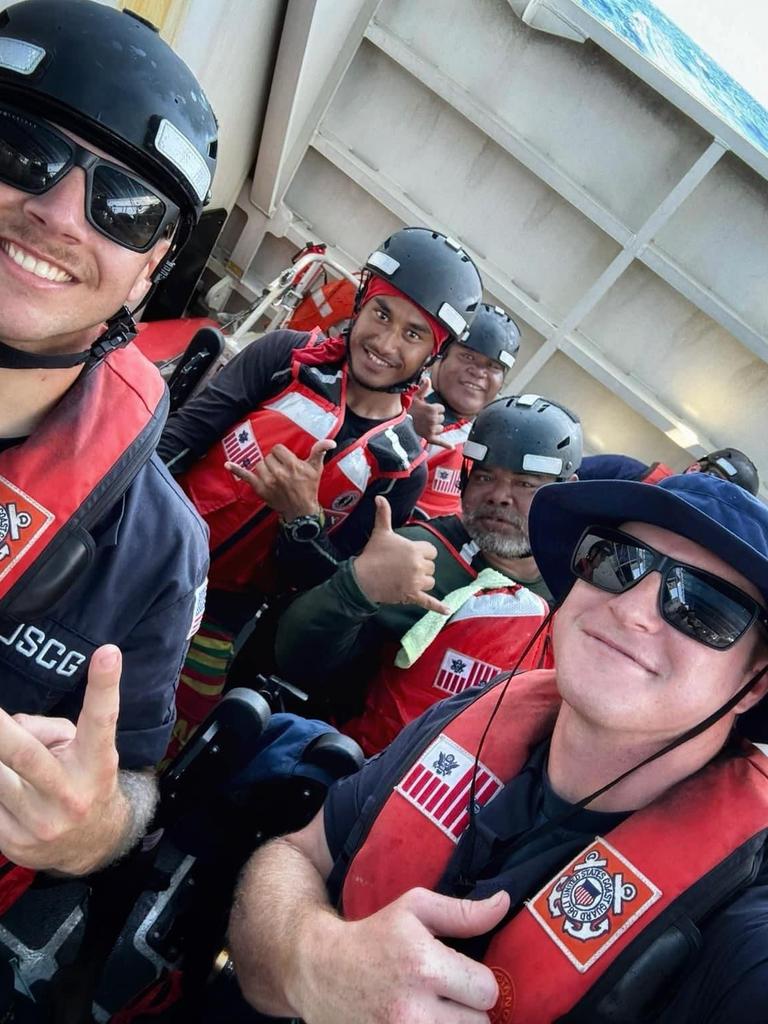
It’s not the first time sailors have been rescued from the island.
In 2020, three stranded Micronesian mariners were saved after writing a giant “SOS*” sign in the sand which was spotted during searches by Australian and US aircraft.
That trio – also three men – was missing in the Micronesia archipelago for nearly three days before they were found.
WATCH THE VIDEO
POLL
GLOSSARY
- stranded: stuck, shipwrecked, helpless, beached
- mariners: sailors, seamen, seafarers
- Federated States of Micronesia: made up of four states — Yap, Chuuk, Pohnpei and Kosrae — and has a population of approximately 113,815 people, sharing maritime borders with the Republic of the Marshall Islands, Palau, Guam and Papua New Guinea. The capital, Palikir, is located on the island of Pohnpei
- Guam: island territory of the United States but which has its own government, it is the largest, most populous and southernmost of the Mariana Islands and lies about 9,300 km west of San Francisco and 2,600 km east of Manila
- skiff: a small light rowing boat or sailing boat
- US Coast Guard: military service within the US armed forces that patrols US- controlled coasts and protects ports, harbours and waterways
- nautical miles: slightly longer than a mile (1.6 km) on land, equalling 1.1508 land-measured miles
- Poseidon: refers to the god of the sea in Ancient Greek mythology
- ingenuity: skill at working out how to achieve things or skill at inventing new things, cleverness, resourcefulness
- pivotal: critical, central, crucial, very important
- testament: evidence, proof, demonstration that something is the case
- enduring: lasting, long-term, continuing, prevailing
- SOS: international code signal of distress in radio (Morse) code and a recognised call for help
- archipelago: any group of islands
EXTRA READING
Solo rower’s incredible survival and homecoming adventure
New island springs up near Japan
Fraser Island officially renamed
QUICK QUIZ
- What did the stranded sailors use to make their sign?
- How many days did they spend on the deserted island?
- What item did the rescue crew drop first and why?
- What was the size of the initial search area?
- What was the type of boat they were sailing on and which part of it was broken?
LISTEN TO THIS STORY
CLASSROOM ACTIVITIES
1. Stranded on a deserted island
The search and rescue team said crafting the world “HELP” from palm leaves was an “act of ingenuity”. Other stranded mariners have written “SOS” in the sand in the past.
If you were stranded on a deserted island, and were hoping that someone has been alerted and is searching for you, come up with three other ways of alerting search and rescue teams of your whereabouts. Think about possible materials you may be able to use and how to display them.
1.
2.
3.
Time: allow 15 minutes to complete this activity
Curriculum Links: English, Design and Technologies, Personal and Social, Critical and Creative Thinking
2. Extension
If you were planning a boat trip that could go wrong, what are five things you would take in a survival pack to use if you get stranded at sea or on a deserted island?
1.
2.
3.
4.
5.
Time: allow 10 minutes to complete this activity
Curriculum Links: English, Personal and Social, Critical and Creative Thinking
VCOP ACTIVITY
Game: Island rescue adventure
Objective:
– To explore language features such as descriptive language, vocabulary and sequencing in the article.
– Suitable for children aged 7-10
Instructions:
1. Set the Scene (two minutes):
– Explain to the children that they are going on an island rescue adventure, just like the one described in the article.
– Describe the scenario: Three stranded men have been rescued from a tiny Pacific island after crafting a giant “HELP” sign with palm leaves. Their story is about their journey, the rescue, and the teamwork involved.
– Discuss the importance of teamwork, resilience, and ingenuity in the island rescue mission, drawing parallels to real-life situations.
2. Language feature hunt (five minutes):
– Read aloud a paragraph from the article, focusing on a specific language feature such as descriptive language, vocabulary or sequencing.
– Add keywords to the board or an anchor chart for referencing.
– After reading, ask the children to identify examples of the targeted language feature from the paragraph.
For example, if focusing on descriptive language, ask the children to identify words or phrases that paint a picture in their minds about the island or the rescue mission.
3. Rescue mission storytelling (10 minutes):
Example story for modelling – the story has been broken into smaller chunks to allow adaptation for groups that struggle with the cognitive demands of storytelling
Title: The Great Island Rescue
Beginning: Once upon a time, three brave explorers set out on a sailing trip to a faraway island. They sailed across the vast ocean, feeling the warm sun on their faces and the salty breeze in their hair.
Middle: However, disaster struck when their boat was caught in a fierce storm, and they found themselves stranded on a deserted island. Determined to survive, they used palm leaves to craft a giant “HELP” sign, hoping to catch the attention of passing ships.
End: Finally, after days of waiting, they spotted a rescue plane in the sky. Their hearts filled with hope as they waved frantically, knowing that help was on the way. With tears of joy, they were rescued and taken back home, safe and sound.– Divide the children into small groups of three or four.
– Provide each group with a large piece of paper and markers.
– Explain that each group will create a story about a rescue mission to save stranded people on a deserted island, like the one in the article.
– Encourage the children to use descriptive language, vocabulary, and sequencing to tell their story.
– Each group member takes turns adding a sentence or two to the story, building on what the previous person said.
– Encourage creativity and imagination as they create their island rescue adventure.
Adaptation: Stories can be verbal and use lapboards or comic strip templates to help students plan their ideas.
4. Share and reflect (three minutes):
– After 10 minutes, invite each group to share their island rescue story with the class.
– Encourage the children to listen carefully to each story and identify the language features used, such as descriptive language or sequencing.
– Reflect on the storytelling process, discussing what they enjoyed about creating their rescue mission stories and what language features they found most effective.
Adaptation: To reduce time, have one group share to the class for modelling, then groups pair up to present to each other.
Extension (optional):
– Encourage the children to draw illustrations to accompany their island rescue stories, depicting scenes from their adventurous tales.


